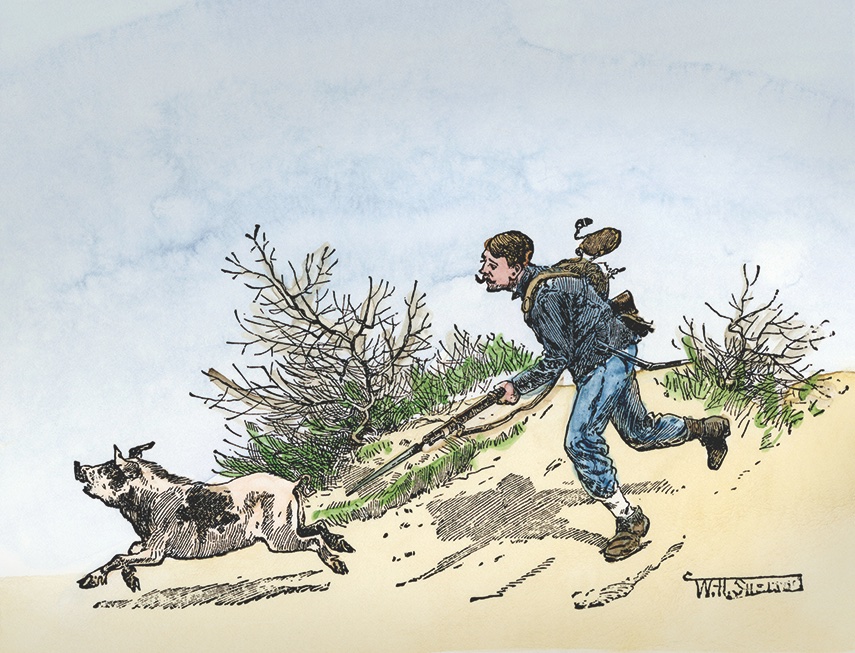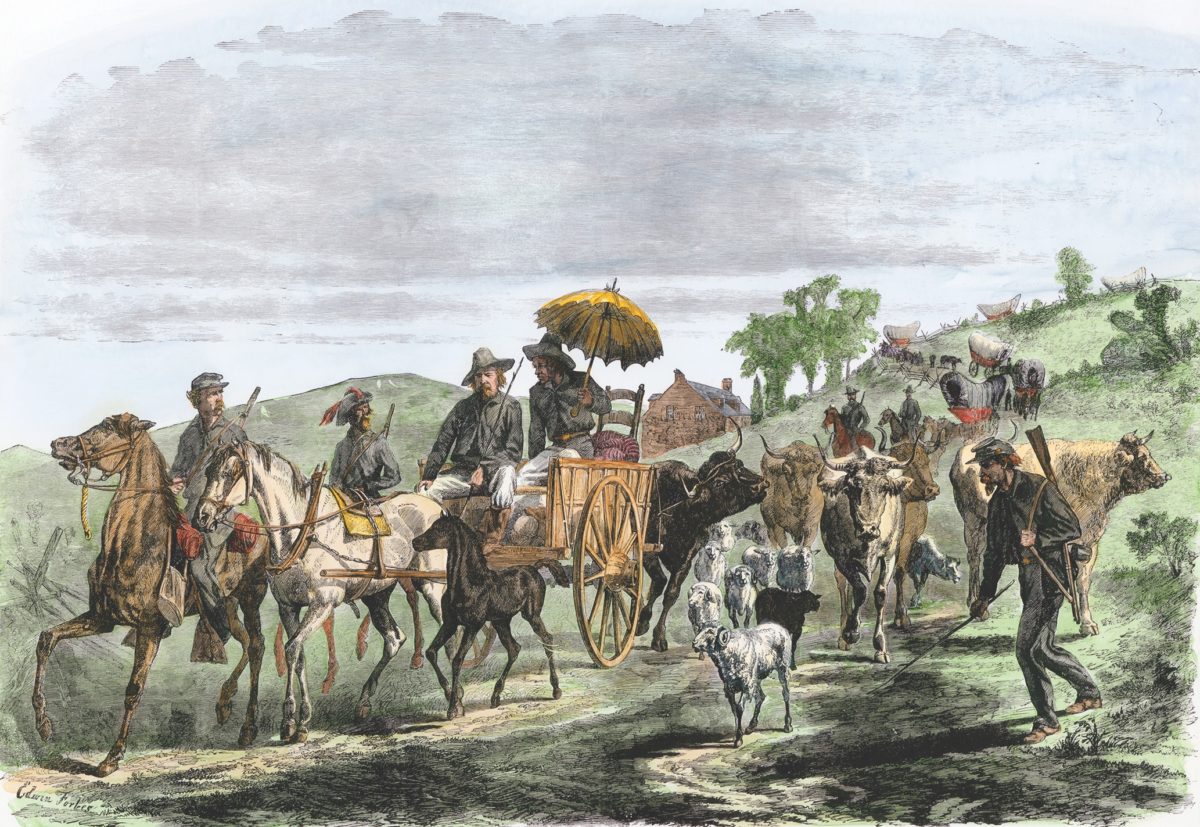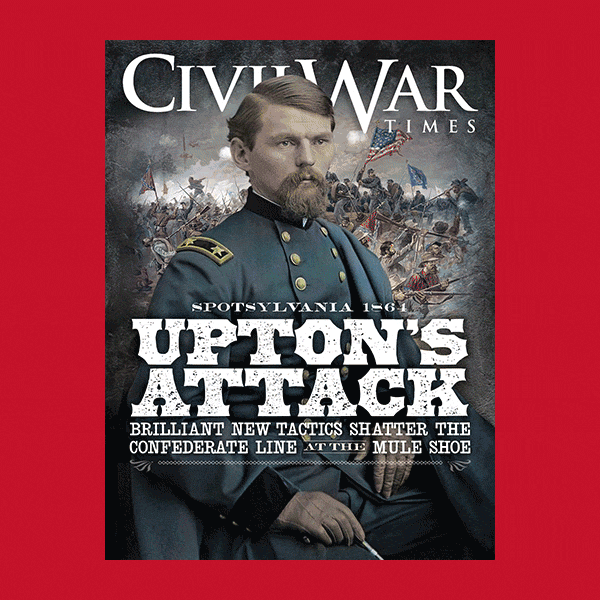Earl Hess has added the study of human-animal relationships and their roles in the Civil War to his long list of scholarship. In his new Animal Histories of the Civil-War Era, he gathers essays on subjects ranging from insects and bees to hogs, dogs, camels, and horses. The war not only exposed the need for an Army veterinarian service, but the scope of suffering and slaughter of millions of animals possibly contributed to the movement toward humane treatment of animals that was gaining ground in the mid-1800s.
CWT: How did you come to the topic of animal histories?
EH: In 2018, historian Joan Cashin hosted a panel on animals and the Civil War at the Southern Historical Association conference. I attended that and had the idea of doing a book length anthology. One of the things I wanted to do was look at what animal studies tell us about the relationship between animals and people. The other thing I wanted to do was understand animals within warfare, as opposed to peacetime connections with humans.
CWT: You contributed chapters on wildlife, vegetarians, and artillery horses.
EH: Animal literature tends to be mostly about horses and dogs, because they had the most widespread contact with humans. But I read soldiers’ accounts and they talk about insects, lightning bugs, and chiggers. Wildlife is part of the animal world, and the soldiers had a lot of contact with animals of a wild nature.
The vegetarian issue is because my wife and I are vegetarians, so we are sensitive to that issue for many different reasons. We don’t think it is a high thing to do for humans to kill sentient creatures just to consume them, and for other reasons too. It struck me that there is a vegetarian perspective of the Civil War. The Army ration was heavily oriented toward meat-eating. Well, a lot of soldiers didn’t like it. They couldn’t eat it without getting sick. There were very few vegetarians in the Union or Confederate Army. But there were a lot of soldiers who could have benefited from such a diet. Some may wonder what this has to do with animal studies. The field does deal with vegetarianism and with the philosophical and other aspects of the huge industry created to nurture and then kill and eat animals. It’s part of that story of animal history. The essay I wrote on artillery horses as warriors talks about the bond between artillery horses and men. We have to understand that some animals, like dogs and horses, were not just used for military purposes. They were weaponized. They were made into warriors. Did they like it? Some adapted to it; some didn’t. Some horses liked it and got involved in it and developed very close and loving relationships with the artillerymen assigned to take care of them. Other horses couldn’t submit to military regimentation. They kicked; they tried to escape. Some died in service because they were so stressed. Horses died by the tens of thousands from disease, combat, and overwork in the field. I think it is important for readers interested in the Civil War to understand all this.
CWT: I was surprised to learn about the absence of veterinarian care.
EH: There were probably only six real veterinarians in America in the 1860s. The practice was in its very infancy. Men had to dig into their civilian experience with home remedies to figure things out. Animal care was horrible in the Civil War.
CWT: Horses seemed so disciplined on the battlefield.
EH: Horses have a herd instinct and understand a pecking order. They respond to other horses or humans who establish dominance over them. Not all horses are smart, but many are clever. Not just artillery horses, but cavalry horses. Some cavalrymen said their horse was smarter than some of their comrades. Horses picked up on bugle signals: they associated a particular bugle signal with a particular movement very quickly without being told what to do. That is really an aspect of cooperation between animal and humans. It is not dominance by the human; it is a cooperative venture between the two. The same could be said for dogs, although dogs were much less used than horses in the Civil War. One of biggest things to draw from animal studies is the concept of agency: that animals are not just machines, passive acceptors of what they’re told, but that there is some degree of opportunity of animals who have a relationship with humans to kind of affect that relationship or have some influence on setting some guidelines on setting what they are or are not willing to do.

CWT: The book also describes how dogs were used.
EH: Lorien Foote explores how animals were used to control enslaved populations. Some Confederate units used dogs to track down escaped Union prisoners, and in one case they were used in a small skirmish with Black troops. I wouldn’t overemphasize this; they were not used by the thousands. But apparently South Carolina used dogs in this kind of way to enforce slavery and domination of Blacks after the Civil War and during the war itself.
CWT: There was a proposal to kill dogs because they harmed sheep needed for uniform wool.
EH: Joan Cashin found a proposal by a Virginia legislator to propose that all dogs should be killed for the war effort. People who raise sheep tended to be really angry at dogs. In many Southern states there are so many dogs that they were pretty much out of control. It is an amazing proposition to kill all the dogs, or propose to tax dogs as an alternative way to control them. But most dogs in the 19th century were not household pets. People kept them for a variety of reasons. They helped them to hunt, or protect their property, or to control Blacks.
CWT: Hogs are also featured.
EH: Southerners ate more pork than anyone else, and the primary meatpacking place in America in the 1860s was Cincinnati, just on the north bank of the Ohio River, just a stone’s throw from Southern territory, so it was a southern-leaning city. An estimated 6.8 millions hogs were eaten during the war, and the Federal Army did a good job of feeding on Southern hogs as they went through the South. The Confederates tried to eat as many as they could.
CWT: Sheridan captured 15,000 hogs in the Shenandoah Valley?
EH: Meat went bad quickly in the 1860s. Spoiled meat was issued to soldiers and then thrown away. The process of providing meat to soldiers was the biggest headache for commissaries and the most expensive task for the government. It created all sorts of environmental problems. If you have a camp of several thousand men camped for a few weeks, a gigantic slaughter yard quickly formed filled with entrails and offal that created a health hazard.
CWT: Obviously, animals were swept into the war, but not on equal footing.
EH: People in the modern world are very much separated from animals. We have no hand in killing the animals that we eat. We pick up the steak ready to cook. We don’t think of it as an animal. Our relationship with animals tends to be focused primarily on pets. One of the things animal historians try to do is break through all that and demonstrate that animals have been with us on the voyage of life, even if we haven’t recognized that. I think an animal-centered vision of the Civil War gives us a better understanding of the conflict’s history and tends to make us more humble.
Thank you for visiting historynet.com. If you buy something through our site, we might earn a commission.






